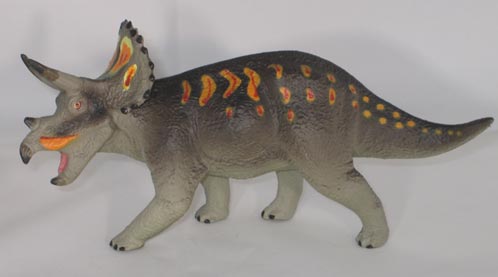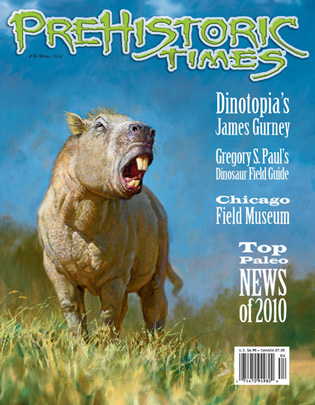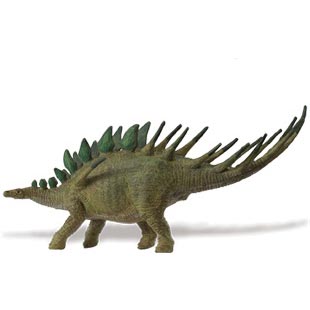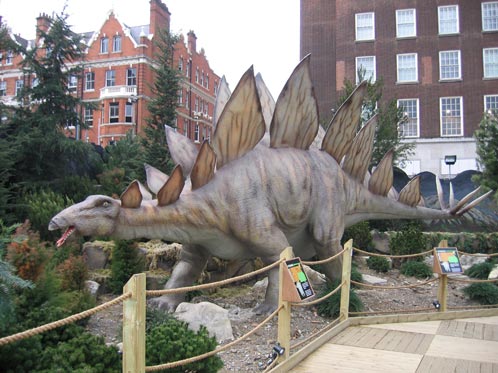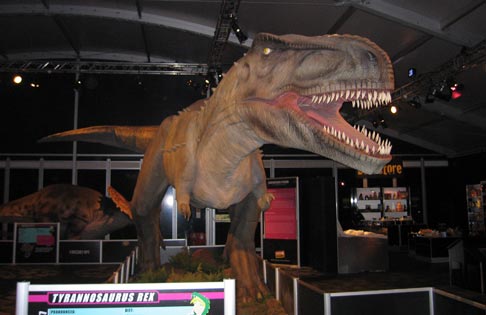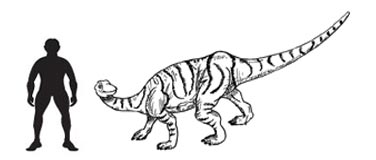Pterosaur Fossil with Egg – Vital Clues to Pterosaur Reproduction
Pterosaurs, those members of the Archosauria alongside the dinosaurs that dominated life in the air for much of the Mesozoic have long fascinated scientists and ordinary folk alike. These creatures that evolved sometime in the Triassic and went extinct at the end of the Cretaceous, dominated life in the air until the birds, those descendants from theropod dinosaurs came onto the scene.
With no extant animals even coming close to the pterosaurs, scientists had been very much in the dark about a number of aspects about pterosaur habits, life styles, breeding strategies and such like. However, the finding of a fossilised pterosaur complete with the remains of an unlaid egg that was inside her may provide vital clues to help palaeontologists piece together more information about these fascinating, extinct flying reptiles.
It seems that pterosaurs laid leathery eggs like turtles rather than the hard-shelled eggs that birds lay. In addition, this new fossil suggests that it was the males of the species that had large head crests, whilst the females were less conspicuous.
The report on the discovery of a pterosaur fossil with evidence of an egg, is in this months edition of the scientific journal “Science”. The genus concerned is a small, Chinese Pterosaur known as Darwinopterus, named in 2009 to honour the bicentennial of the birth of the naturalist Charles Darwin and also to mark the 150th anniversary of the publication of Darwin’s ground breaking book outlining his theory of natural selection “The Origin of Species”.
To read more about the discovery and naming of this pterosaur: Pterosaur Transitional Fossil.
Pterosaur Research
The fossil of Darwinopterus was found in the Liaoning Province of China, it has been dated to approximately 160 million years ago, we have put an arrow on the picture we received to highlight the egg which had been expelled by gases inside the body cavity as the organic remains of this pterosaur rotted away. The fossil was found in sediments that formed at the bottom of an ancient lake, it seems that this little flying reptile suffered a broken wing for some reason and fell into the water, eventually settling on the still bottom where the muddy sediments preserved her remains.
Commenting on the discovery of the egg and its implications for pterosaur gender, David Unwin, a palaeobiologist at the University of Leicester (England) stated:
“In almost none of the previous collections can we tell what the gender of the fossil is. This is the first association of an egg with an adult, so we can identify it as a female.”
Pterosaur Egg Discovery
The discovery of this fossil, it was found by a local farmer and handed over to Chinese scientists, provides evidence to support a number of theories that had been proposed by palaeontologists. Firstly, that female pterosaurs had larger, wider pelvic areas than the males, this would permit the storage and passage of eggs. The lack of an ornate head crest suggests that it was the males who tended to be crested – the peacocks of the Mesozoic.
A chemical analysis of the area shows that there is an absence of calcium carbonate, the mineral responsible for making bird eggs hard.
Under high powered magnification, the researchers could identify folds and pores within the egg (see black arrows on picture). This suggests that the pterosaur egg had a similar structure to that of a modern turtles, it would have been leathery and “parchment like”. These soft-shelled eggs, could probably swell and grow in size, absorbing water from the environment rather than having to contain all the water required to make the egg hatch as in the case of the hard-shelled eggs of birds.
Dr Unwin stated:
“By laying soft eggs that could grow in size, pterosaurs could make a much smaller investment in terms of material effort.”
This has implications for pterosaur nesting behaviour, perhaps they buried their eggs in sand, rather than brooding them as birds do. The fact that the egg has been found in association with the egg layer provides evidence for the relationship between the pterosaur that laid the egg and the size of the actual egg laid.
Dr Unwin went onto add:
“What we now need to do, is to look at lots of pterosaurs and look at other things such as size. Were males typically bigger or smaller than females? And other really fundamental kinds of things that we know for living species, we can now look at in pterosaurs.”
This is evidence for a very “reptilian” form of reproduction for the pterosaurs. This fossil suggests that these flying reptiles, laid their eggs in moist, soft ground and then abandoned them to their fate, in a similar way to turtles today.
Based on the few fossils of juvenile pterosaurs found to date, scientists believe that, unlike birds which need a degree of parental care, pterosaurs once hatched; were fully independent, miniature versions of the adults and capable of feeding for themselves.
Dr Unwin commented:
“The y looked like tiny adults. They were highly precocious and could almost certainly fly very soon after hatching.”
Mark Witton, a pterosaur research scientist and renowned illustrator based at the University of Portsmouth, when asked about the discovery said:
“What makes this find so special is that the egg was not found in isolation. We could identify in some cases what species the eggs belonged to, but we have never had a pterosaur egg in association with its mother before.”
Commenting on the size ratio between the mother and the egg, Chatham University palaeontologist Michael Habib stated:
“They seem to be relatively smallish eggs. That is consistent with most egg-laying animals, but they don’t all do that.”
Pterosaur
The absence of a discernible head crest on the female suggests that it was the male pterosaurs that possessed the ornate head crests. If this is true, then this discovery will help scientists separate the girls from the boys in other pterosaur genera.
Based on this evidence, the research team thinks only Darwinopterus males sported head crests, which they may have used to communicate with other members of their species.
Dr Unwin, a co-author of the study paper stated that the crests could be used for communication or display, being used to signal to other males that “I’m bigger than you”, or it could be used to tell females that “here I am, carrying this enormous crest, and I’m better to mate with than the chap next door who has a smaller crest.”
To view scale models of pterosaurs such as Dimorphodon and Guidraco: CollectA Deluxe Prehistoric Animal Figures.
